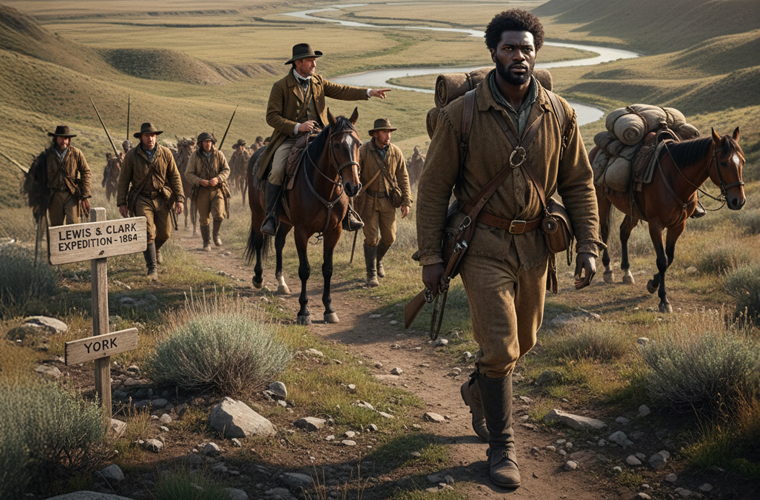Contributions of York and Sacagawea to the Lewis and Clark Expedition
York: A Vital Member of the Expedition
York, an enslaved Black man owned by William Clark, was a crucial member of the Lewis and Clark Expedition. A childhood companion of Clark, York made significant contributions to the journey. He provided dedicated care to Sergeant Floyd during his final days and risked his life to save Clark during a flash flood on the Missouri River near Great Falls, in present-day Montana.
York participated fully in the expedition’s tasks, including hunting, setting up tents, managing sails, and rowing. He was a true team member, performing the same duties as others. His presence intrigued Native American tribes, many of whom had never seen a Black man. A Mandan chief once tried to rub the color from York’s skin, and his powerful build and unique appearance drew the attention of Native women and children, who respected and admired him.
Despite being enslaved, York experienced a semblance of freedom during the expedition. He carried his own rifle and had a vote in expedition decisions, marking him as a full participant. However, returning to a world of slavery after the journey must have been jarring. Though Clark eventually granted York his legal freedom, life as a free Black man in a society steeped in racism and slavery remained precarious, with freedom existing only on paper.
Sacagawea: A Key Interpreter and Navigator
Sacagawea, a teenage Shoshone girl, joined the expedition from the Mandan Villages alongside her husband, Toussaint Charbonneau, a French Canadian trader. Captured by the Hidatsa tribe as a child, she was later given to Charbonneau, who was over 40. Pregnant during the expedition, Sacagawea embarked on an 8,000-mile, 28-month journey through some of America’s most perilous territories. Lewis and Clark valued her inclusion primarily for her linguistic skills, as she spoke both Shoshone and Hidatsa, along with some French.
While not a guide, Sacagawea’s ability to interpret the landscape was invaluable. She read rivers and valleys, providing insights into direction and location, and identified edible plants along the way. Her role as an interpreter proved critical when negotiating with the Shoshone for horses, a contribution that likely saved the expedition. On August 17, 1806, as the expedition prepared to return to St. Louis, Charbonneau received about $500 for his services, horse, and tepee. Sacagawea, however, received no compensation. Her story ends tragically and uncertainly. By 1811, she was reportedly seen in St. Louis, wearing cast-off clothing and wandering alone, having entrusted her children to Clark’s care. It is believed she died around 1812, in her early twenties.
William Clark later acknowledged Sacagawea’s contributions in a letter to Charbonneau, stating, “Your woman who accompanied you that long, dangerous, and fatiguing route to the Pacific Ocean and back deserved a greater reward for her attention and services on that route than we had in our power to offer her.”

